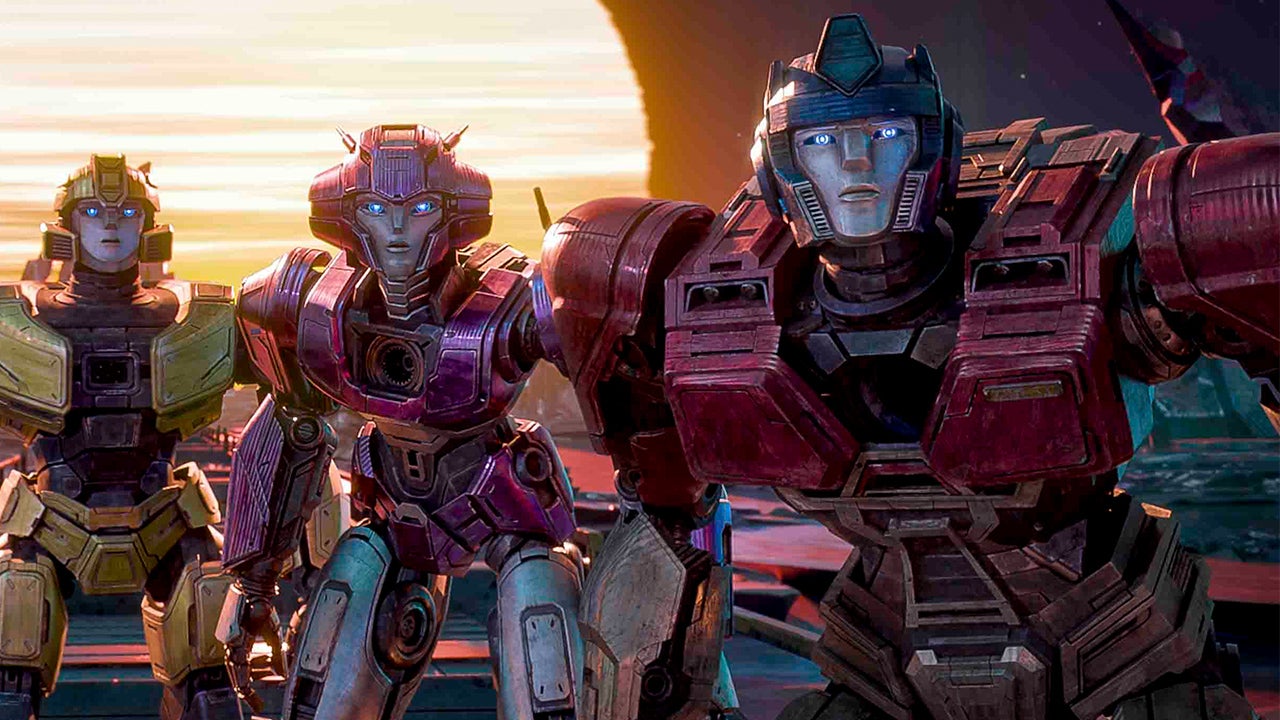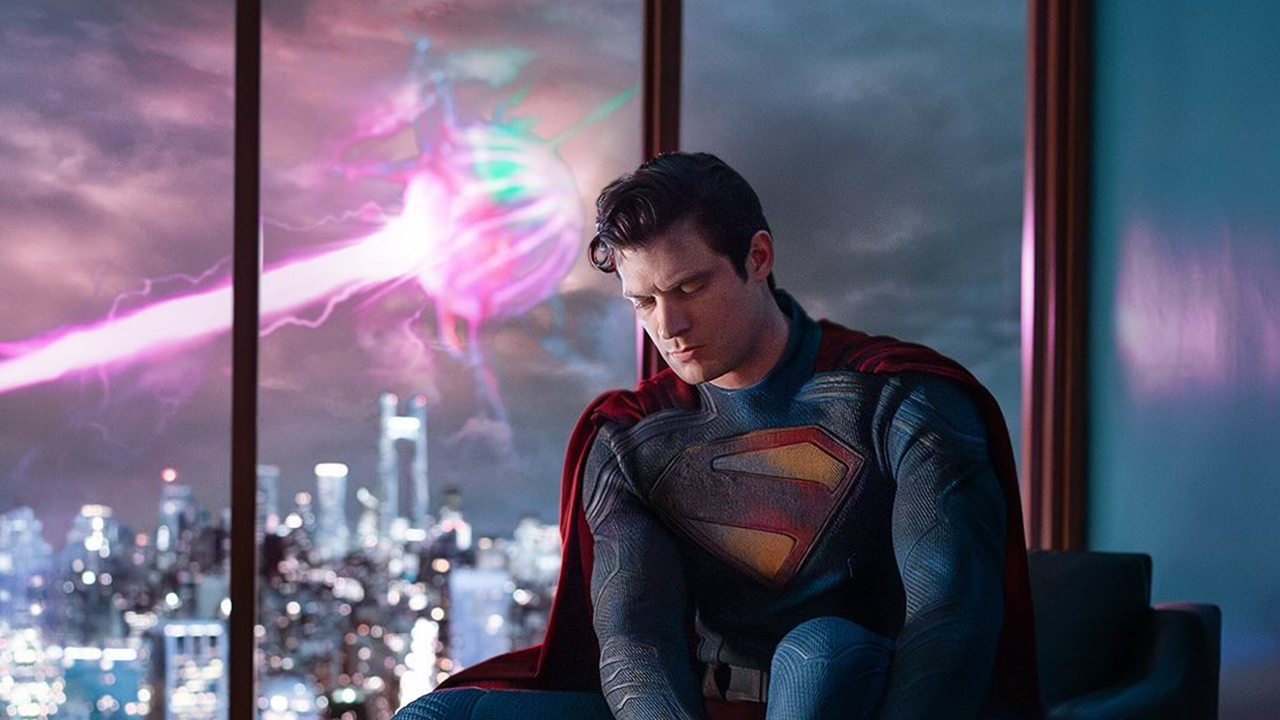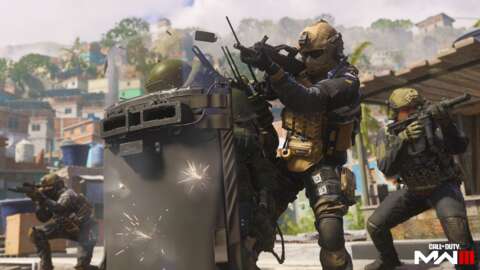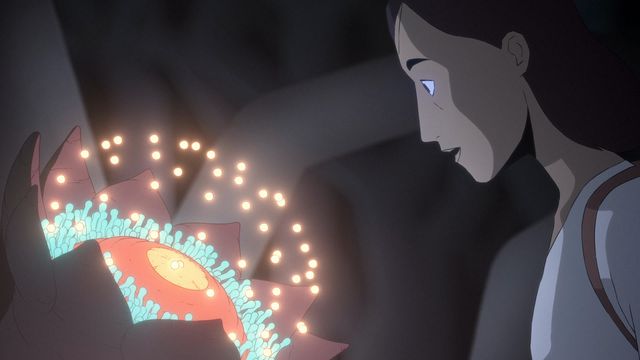We’re living in a renaissance for animated films based on toys and comics that manage to both dazzle and dig deeper. The Spider-Verse films and Teenage Mutant Ninja Turtles: Mutant Mayhem recently reinvigorated their respective heroes with both visual and narrative panache that was pitched at (and landed with) longtime fans and newcomers alike. In that way, Transformers One – which has been in the works since around the time of the first Spider-Verse movie was first announced – feels late to the party and far less self-assured.
Taking a cue from the eye-poppingly stacked cast of 1986’s The Transformers: The Movie – which featured the voices of legends including Orson Welles, Leonard Nimoy, and Scatman Crothers – Transformers One’s robots are brought to life by high profile talent like Chris Hemsworth, Scarlett Johansson, Brian Tyree Henry, Keegan-Michael Key, Jon Hamm, Laurence Fishburne, and Steve Buscemi. The obvious standout from that impressive roster is Henry’s D-16, whose pain and grievance with the system on the Transformers’ home planet of Cybertron pushes him down his dark path towards becoming the villainous Megatron. Henry’s conviction and emotional vulnerability regularly steals scenes and frequently represents the only real humanity Transformers One has to offer which, for the record, is even more important when there are no actual humans around. The script doesn’t do D-16’s arc many favors, with his nuanced feelings about Cybertron’s storied defender Sentinel Prime (Hamm) completely flattened out by a plot that’s too busy juggling a fetch quest and a razor-thin political conspiracy to reliably keep that narrative train on the tracks.
All that Cybertron lore and backstory can be interesting at times, but none if it is covered with enough depth or novelty to feel fresh. Transformers One is designed to be accessible to audiences with all levels of familiarity with the robots in disguise, But for anyone who paid any attention to Michael Bay’s first three live-action Transformers films (Bay is a producer here), the movie throws warning flags by choosing MacGuffins that render almost every turn of the story a foregone conclusion.
Chris Hemsworth’s Orion Pax begins the story quite far from the Optimus Prime we know he’ll become, with little direction or motivation to get him there. Even though his journey from robo-miner to robo-messiah doesn’t feel all that well-drawn – in spite of some nice, bassy exposition from Laurence Fishburne’s Alpha Trion – Hemsworth does good work evolving his performance over the course of the 104-minute runtime to account for the gravitas and responsibility that come with his growing status. Starting off as a powerless Energon miner, Orion Pax’s good nature makes his ascension to Prime status somewhat gratifying, moreso as the big climactic battle approaches.
It may not surprise you to hear that transformation is a major theme, but that’s something Transformers One communicates by telling us, not showing us or making us feel it. Still, it successfully builds out the relationship between Orion Pax and the friend he calls “D”: Mining the fuel that drives life on Cybertron is dangerous work, and an early near-disaster sets up the close bond between D-16 and Orion Pax. D is all about following the rules, Orion is a lot more loose, and the ways that those personality types first complement, then clash with each other produce some good tension here and there.
Key’s B-127 scores a few laughs with his stir-crazy enthusiasm for his new gang, but B’s usefulness to the story is spent immediately, turning what could have been an effective cameo into a distraction from the more prominent bots. Most of Transformers One’s humor is pretty basic – broad enough for everyone to be in on the joke, but generally nothing that rises above quippy, robot-themed banter. The shortest end of the stick for characterization goes to Johansson’s Elita-1, for reasons that have little to do with her performance. The Black Widow star has turned in plenty of strong voice performances – Her and The Jungle Book immediately come to mind – but Elita is drawn here as a caricature of a girlboss devoid of any real personality traits other than “stern.” Playing one of the only two female Cybertronians in the movie (the other’s an angry spider lady) in the unenviable position of basically having to shout at the boys to stop getting them into trouble for the whole 104-minute runtime.
Transformers One’s world and characters pull heavily from the original, Generation 1 era: straight lines, wide curves, and smooth, shiny faces everywhere. And perhaps befitting how closely it recreates the look of the toys, Transformers One looks best at rest, in dialogue scenes or the few moments of contemplation invited by Cybertron’s vaporwave sunset. The sun slipping below the horizon may be the coolest shot pulled off by director Josh Cooley, and I promise I haven’t forgotten to include the transforming robots in that calculation. Transformers One splits its time between the subterranean capitol Iacon and Cybertron’s abandoned surface, with the more interesting scenes taking place underground and the more interesting visuals captured above. On the musical front, Brian Tyler’s score barely registers – generically orchestral with rote touches of electronica that elevate neither the drama or action.
Setting the story entirely on Cybertron raises the question of how well a Transformers movie can function without humans there to draw contrast to the future Autobots and Decepticons. It’s not just because of the logical quandaries that abound, like why it is that Orion Pax can turn into a big rig billions of years before any sort of truck would be invented (on a planet lightyears away from Cybertron) – Transformers One’s entire sense of perspective suffers for not having meatbags around for scale. It’s a problem from the opening moments, when we see Orion Pax climbing up a building to sneak into an archive for information on the lost Primes. He’s quickly caught by guards who are much bigger than him… but how big is Orion to begin with?
The scale issue is at its most egregious during Transformers One’s chases, races, and all-out robot warfare, which it deploys at all the expected moments. The action may be flashy and fast-paced, but good luck keeping track of what’s actually going on. While the most famous Transformers’ silhouettes are all stark and in keeping with what you’d imagine those characters to look like, the action is largely captured by the virtual camera in a way that turns everything into a blur of nondescript robot bodies crashing against alien landscapes and architecture. Having any sort of means of comparison becomes critical in these moments, as you’re trying to understand things like where your heroes are, how fast they’re going, and in what direction – basics that Transformers One doesn’t always account for. There are times where the battles feel like a kid slamming two Transformers toys together, and I say that with the lived experience of having done the very same with my Beast Wars Rattrap and Cheetor toys as a kid. But at least in that instance, I could keep track of what was going on, who was involved, what was at stake, and where my Fruit Roll-up was in relation to the plastic carnage. Sadly, you can’t always say the same for Transformers One.










